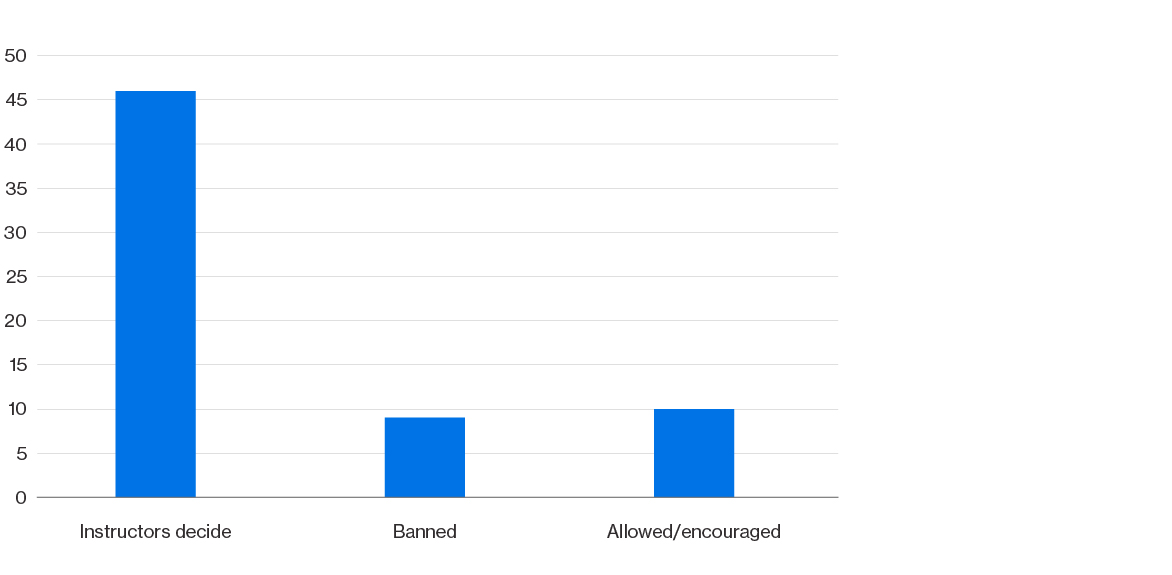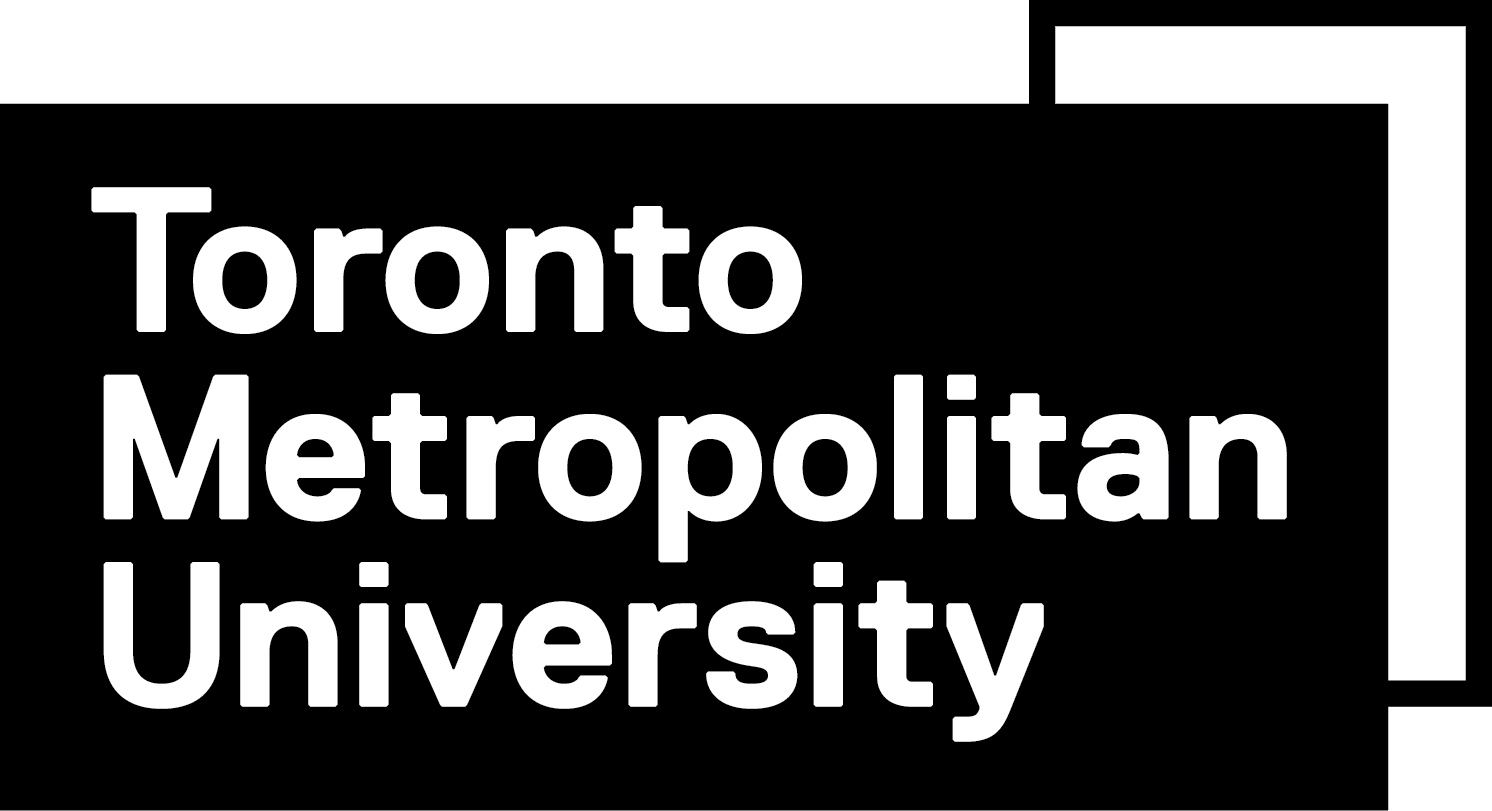
AI and the Future of Post‑Secondary Education
Navigating the AI Revolution

Français • January 4, 2024
Despite the many potential benefits of generative AI for teaching and learning, there are also concerns around academic integrity, accuracy, reliability, privacy, and data security.
But generative AI is here to stay. Are Canadian post-secondary institutions ready?

The Conference Board of Canada, on behalf of the Future Skills Centre, is studying the impacts, benefits, and risks surrounding the use of generative artificial intelligence (AI) in post-secondary education in Canada. This project will:
- examine existing institutional guidelines for AI use in post-secondary education, as well as current AI use cases;
- investigate the implications of generative AI use for teaching and learning at the post-secondary level;
- develop a flexible set of guidelines and recommendations for post-secondary leaders on how generative AI can be used equitably, responsibly, and advantageously.
The promise of generative AI for teaching and learning

The release of ChatGPT in November 2022 was a “this changes everything” moment for post-secondary education leaders, educators, and students. Generative AI has the potential to automate administrative tasks, streamline processes, and facilitate resource allocation, enabling educators to focus on high-value activities such as student mentorship and engagement.
For students, generative AI has the potential to create personalized learning strategies, provide ongoing academic support, and equalize access to educational materials and resources.
Some Canadian post-secondary institutions have already experimented with advanced AI technologies.
Simon Fraser University developed AI-powered virtual laboratories for science and engineering students. These virtual labs allow students to conduct experiments and simulations remotely, providing hands-on learning experiences even when physical labs are unavailable.
McMaster University introduced AI-powered chatbots and virtual assistants to provide students with instant answers to questions on course registration, campus resources, and general inquiries.
The University of Waterloo incorporated AI systems that assist researchers in identifying relevant literature, analyzing data, and generating insights.
Uncharted territory
The rapid development of generative AI tools, such as ChatGPT, has left many educators and policy-makers scrambling to catch up and navigate this uncharted territory. While some Canadian post-secondary institutions (PSIs), such as the University of Toronto, have begun to implement guidelines for instructors and students, most Canadian PSIs do not currently have any formal policies or guidelines in place. (See Chart 1.)
Chart 1
Availability of guidelines for AI use across public Canadian PSIs
(number of institutions)

Note: Data collected from institutional websites between July 23 and October 13, 2023. A list of all public PSIs was obtained from the Canadian Information Centre for International Credentials (CICIC). Institutions without publicly available policies or guidelines were contacted and invited to share internal documents.
Sources: The Conference Board of Canada; Canadian Information Centre for International Credentials; institutional websites.
Instructors decide
Among the Canadian PSIs that have formally acknowledged generative AI, the policy is typically to let instructors decide on whether and how they should incorporate AI into their courses. (See Chart 2.)
Even in institutions that have formally banned the use of AI, there is usually some room to allow instructors to use it in their courses should they wish to do so.
However, as the rise of generative AI is recent, it is likely that most instructors have not received training on how to best integrate these tools into the classroom. Some may not be familiar with how these tools work and what they can achieve.
Ultimately, instructors who are keen on incorporating generative AI into their teaching practices need the knowledge, guidance, and resources to do so effectively.
Chart 2
AI use policy in institutions with available guidelines
(number of institutions)

Note: Results from analyses of AI use policies and guidelines available in Canadian PSI websites. A list of all public PSIs was obtained from the Canadian Information Centre for International Credentials (CICIC).
Sources: The Conference Board of Canada; Canadian Information Centre for International Credentials; institutional websites.
The future of teaching and learning
To better understand how the Canadian post-secondary ecosystem can integrate generative AI into educational practices, we will:
- review how generative AI tools are currently being used in post-secondary teaching and learning across PSIs in Canada and internationally;
- review the content of existing institutional guidelines on generative AI use across Canadian public PSIs;
- conduct an online survey of post-secondary students’ and educators’ attitudes and experiences surrounding generative AI use for teaching and learning;
- interview AI experts in the Canadian post-secondary space (PSI leaders/executives, educators, researchers).
Insights from these activities will inform a flexible set of guidelines for how post-secondary leaders can harness the power of generative AI to improve the teaching and learning experience, foster greater student engagement and success, and prepare learners for the complex challenges of the future of work.
If you’re interested in learning more about this study or participating in an interview, please contact Adam Vanzella Yang, Senior Research Associate, Education & Skills (vanzella@conferenceboard.ca).





